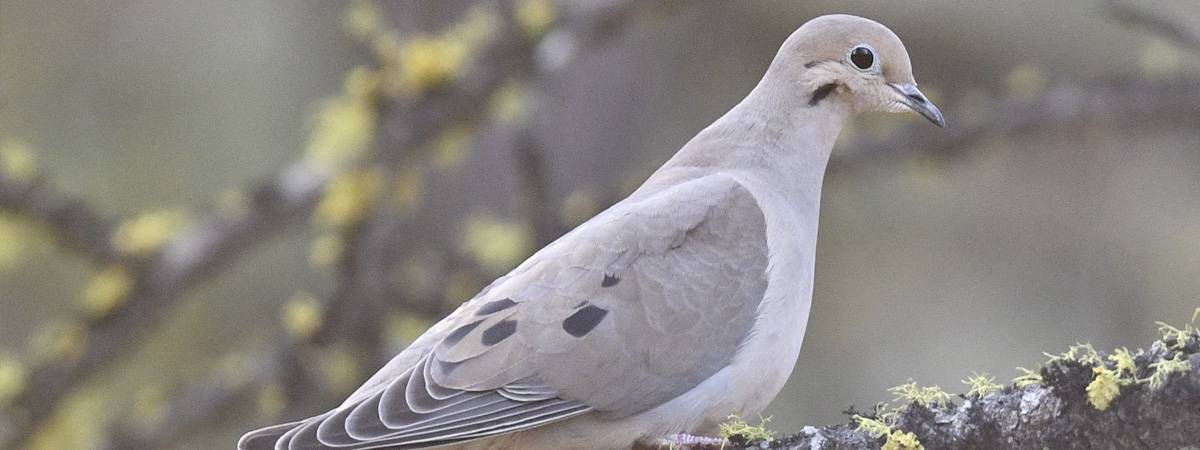Mourning Dove
(Zenaida macroura)
By Sevilla Rhoads
Thank you to Chuck Gates for his time reviewing our bird blog posts for accuracy.
We recently lost a much-loved family pet. We processed our grief while quietly walking in the forests around Sunriver. The soft and plaintiff cooing of our resident Mourning Doves seemed to perfectly express feelings for which we had no words. Often taken for granted as a common background bird, our faithfully present Mourning Doves rise into our awareness just when we need them with their poignant, gentle wail and comforting subtle beauty.
Few birds are as seeped in historical symbolism across cultures as the dove. Something about these birds moves humans so deeply that we find them embedded in the writings, art, and oral histories of many cultures across time and continents. For most Americans, the dove evokes associations with both grief and peace. Perhaps people connect the pain of loss and the desire for peace in the dove’s haunting calls?
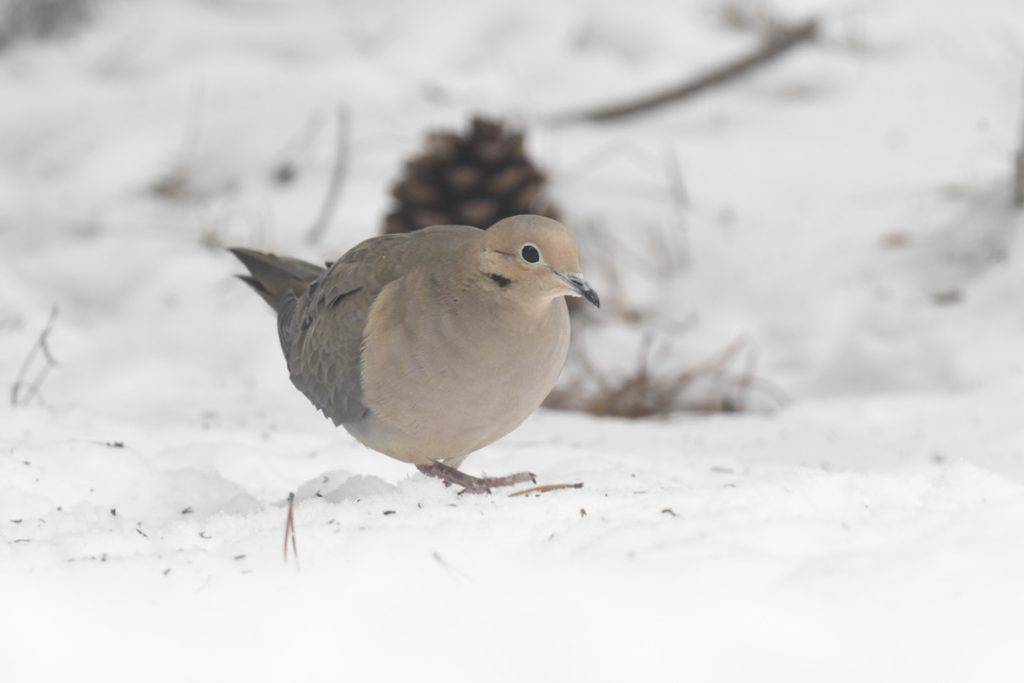
It was Pablo Picasso’s Guernica painting depicting war suffering that inspired the request he paint the dove chosen to symbolize peace at the first International Peace Conference in 1949. Picasso named his daughter Paloma which is the Spanish word for dove.
The Mourning Dove is one of our most widespread and numerous native land birds. Fossil records indicate these doves have been in North America for over ten thousand years. Mourning Doves can live in almost any habitat except dense forests and wetlands, and they often adapt well to human development. U.S. Mourning Dove populations have expanded to an estimated 350 million. There is comfort knowing we share this bird with almost everyone across the mainland U.S. Perhaps others around the country also notice this dove’s calls at just the right time for them.
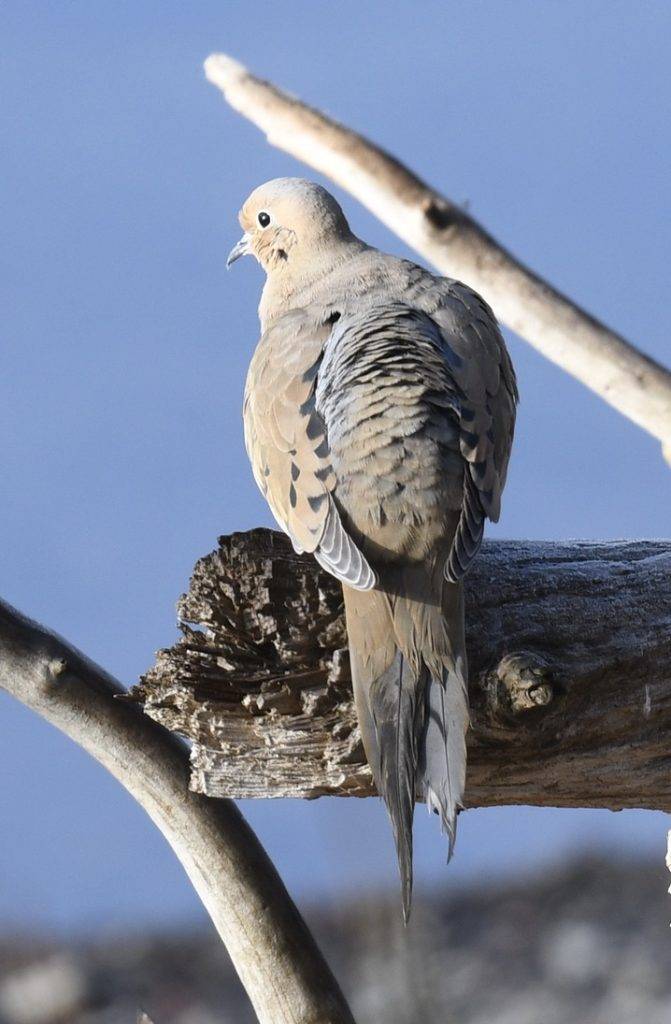
Somewhat befitting their tragic cries, on average, Mourning Dove adults only live for a year. Despite such short lives, they still gain in population because this species can breed from as early as February through as late as October and can start a new nest as soon as thirty days after starting the last one. They typically lay two eggs at a time, and the young fledge in about a month. Perhaps the coo of the dove is so familiar to us because of the frequency they are wooing and courting each other.
For the first three or four days of a Mourning Dove chick’s life, the male and female parents feed them ‘crop milk.’ This immune-boosting antioxidant-rich milky liquid comes from special cells in the parents’ crops. The chicks drink it directly from the parents’ beaks. Crop milk is unique to pigeons, doves, Flamingos, and some penguin species (Yes, an odd assortment!).
U.S. hunters harvest over 20 million Mourning Doves a year. Doves and pigeons were food for many native tribes and were a welcome addition to the meager diets of the early pioneers. The culinary term Squab once referred to doves as well as pigeons and often appeared on American restaurant menus until the idea of eating pigeons fell out of favor.
Originally, dovecotes were towers designed to attract roosting doves and pigeons, so the tower’s owner had a ready source of meat, especially in winter. In Europe, dovecotes were considered a status symbol and there was even a medieval law prohibiting ‘commoners’ from having dovecotes.
Mourning Doves are in the same bird family, Columbidae, as pigeons. Somewhat similar in size and shape, you could mistake the two, but Sunriver has very few pigeons. On a rare occasion, a wild Band-tailed Pigeon might come through the area, and once in a while, a flock of the ‘city’ pigeons (officially called Rock Pigeons) might pay us a quick visit from places like Bend. So, while pigeons are considered a messy pest in many parts of this county, they are a special sighting for Sunriver birders.
In addition to Mourning Doves, there are two other dove species you might see here. One, the White-winged Dove, is extremely rare for this area, with eBird only listing a total of 13 Deschutes County sightings. If you see a dove with clear white wing bars, take a photograph and consider submitting the sighting to Cornell’s eBird. eBird is a free citizen science App. Reporting rare sightings on eBird helps researchers and may contribute to conservation efforts.
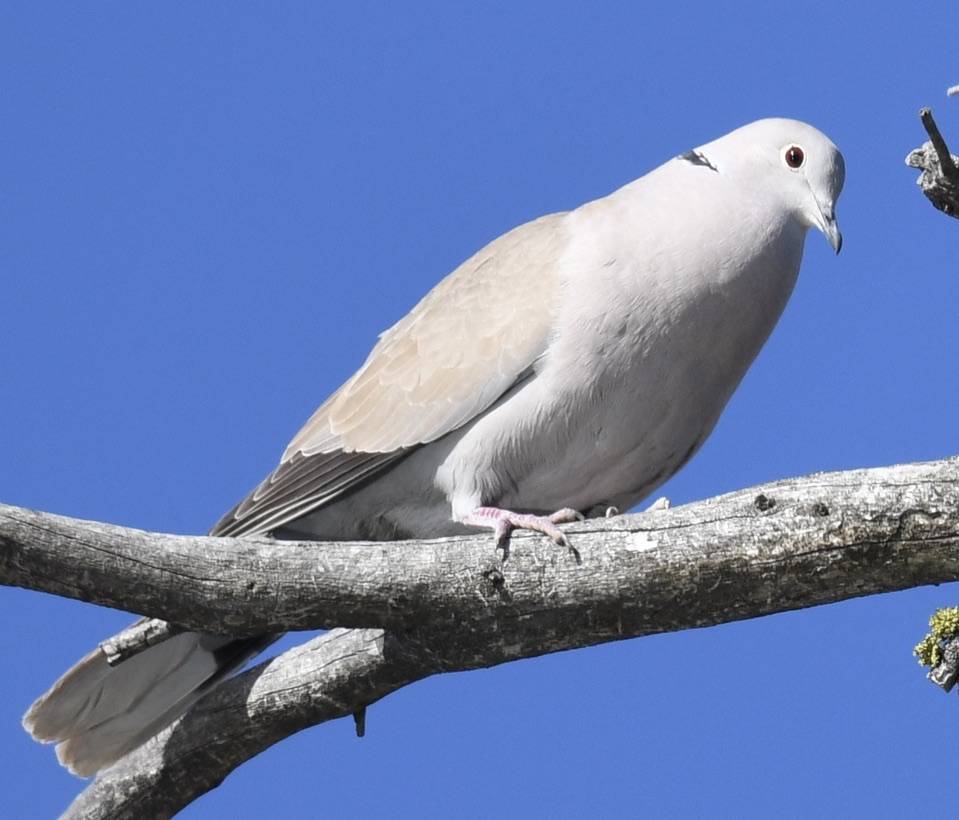
The other dove species, the Eurasian Collared-Dove, while less often seen in Sunriver than Mourning Doves, is becoming more common. Overall, Eurasian Collared-Doves are similar in color and shape to Mourning Doves but often appear paler, slightly larger and sport a partial dark collar rather than the body spots of a Mourning Dove. These literally collared doves are not native; rather, as you might guess from their name, they originated in Europe.
The story of how Collared-Doves came to Oregon is quite interesting. Before the 1970s, there weren’t any wild Collared-Doves in North America. Now there are an estimated 85 million. Most believe the first wild Collared-Doves originated from a pet store in the Bahamas that sold this imported European species as an exotic domestic bird. In 1974, the store was burglarized, and, during the crime, the robber let about fifty Collared-Doves escape. Some say the release might not have been accidental with the owner having a motive to get rid of some birds pending a federal investigation into illegally imported species. Helped by hurricanes over the next few years, some of the escapee Collared-Doves were blown to Florida where they began their colonization of the mainland. Their population and range rapidly increased so that you can now find Collared-Doves across the nation in every state. Research does not find these invasive doves harm the native birds, but they are competition for food when it is scarce and can carry diseases that impact native species.
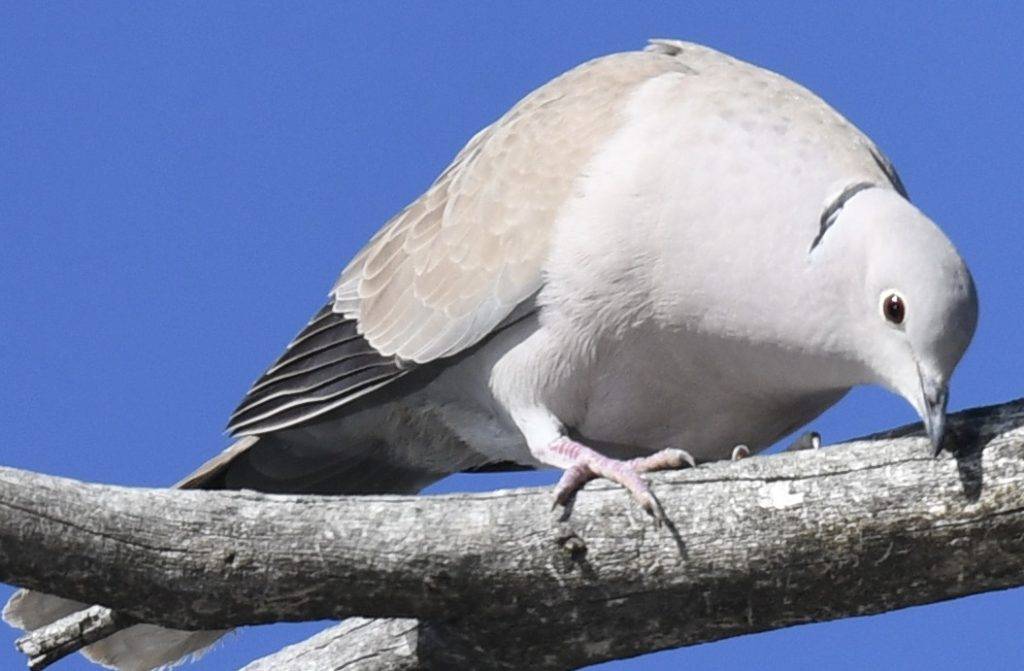 The scientific name for Eurasian Collared-Doves is Streptopelia decaocto. The second half of this name relates to an ancient Greek myth about call of this species: A maid was angry she worked too hard for only eighteen coins, so she begged the gods to tell the world how little her mistress paid her. Hearing her plea, Zeus created Collared-Doves to forever call out “Deca-octo” which means eighteen coins.
The scientific name for Eurasian Collared-Doves is Streptopelia decaocto. The second half of this name relates to an ancient Greek myth about call of this species: A maid was angry she worked too hard for only eighteen coins, so she begged the gods to tell the world how little her mistress paid her. Hearing her plea, Zeus created Collared-Doves to forever call out “Deca-octo” which means eighteen coins.
As I write this post, it is an early summer morning, and most Sunriver birds are relatively quiet at this time of year. Aside from a few distant geese, the only calls are those of the Mourning Doves.
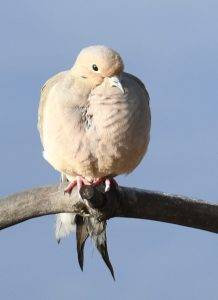
Identification Tips
About twelve inches in length, this buffy-gray dove appears more slender and overall brown than pigeons. Sometimes their plumage has shades of peach-pink or pale beige on the head, neck and chest. In some lights, the edges of their backs and the top of the wings and tails have a blue sheen. On many, you see large black spots on the upper wings and a small black smudge on the neck. Their eyes seem dark black being set in almost-turquoise thin eye rings. They have a delicate dark bill. Particularly when seen flying, the tail is arrow-shaped tail with white or gray sides.

